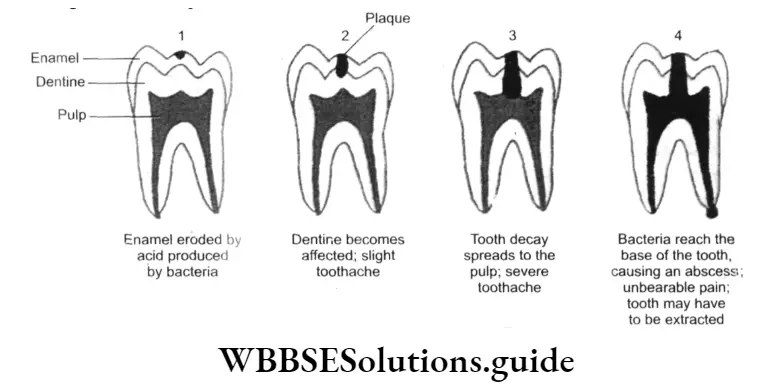Digestion
1. Steps In Digestion
- In the last chapter, you have learnt that the food consumed by us consists of a number of nutrients.
- What happens to the food as well as the nutrients that we eat?
- Whatever may be the food and the nutrients present in the food, it undergoes
Read And Learn More: NEET Class7 Biology Notes
The following five steps:
These five steps are the steps in the process of digestion.
- Ingestion: The process by which food is taken in by the organisms is called ingestion.
- Digestion: It is the process of breaking down complex food into simpler absorbable molecules. This is brought about with the help of special molecules called digestive juices or enzymes.
- Absorption: It is the process by which digested food is taken up (or absorbed) by the body.
- Assimilation: The absorbed food is incorporated into living cells and is used by the body for its growth and other purposes.
- Egestion: This is the process by which undigested food is removed from the body.
- Nutrition: The process by which organisms obtain and use food is known as nutrition.
- Enzymes: Enzymes are proteins in nature. These act as catalysts.
“digestion and absorption neet notes “
2. Digestive System In Humans
- The body cells cannot use the food in the form it is eaten by us. It is converted into a simpler form by the process of digestion.
- The process of digestion starts in the mouth. From the mouth, the food passes through a food canal (called the alimentary canal).
- The alimentary canal is a long, muscular and coiled tube. It starts from the mouth and ends at the anus.
Why do we need a Digestive System?
- All animals need food to survive, grow and function properly. Often the food eaten is solid. Solid food cannot be absorbed by the body cells as it is. Our digestive system has two basic jobs to do with the food we take in.
- The first job is to break down large food particles so that they can be carried through the body. The second job of the digestive system is to transform the molecules of food into simple molecules.
- We take in foods of all kinds—milk, meat, tea, potato, fish, and so on. These molecules must be broken down into simpler molecules so that they can finally be built into human protoplasm.
- The digestive system ensures that the digested material is absorbed into the blood vessels. In this way, nourishment reaches all the body cells.
NEET Study Material for Digestion Chapter
The different organs of the alimentary canal are as follows:
- Mouth and mouth cavity
- Oesophagus (gullet)
- Stomach
- Small Intestine
- Large Intestine
- Anus

Associated with the alimentary canal are some glands. These are:
- Salivary glands
- Liver
- Pancreas.
The alimentary canal along with the associated glands is called the digestive system
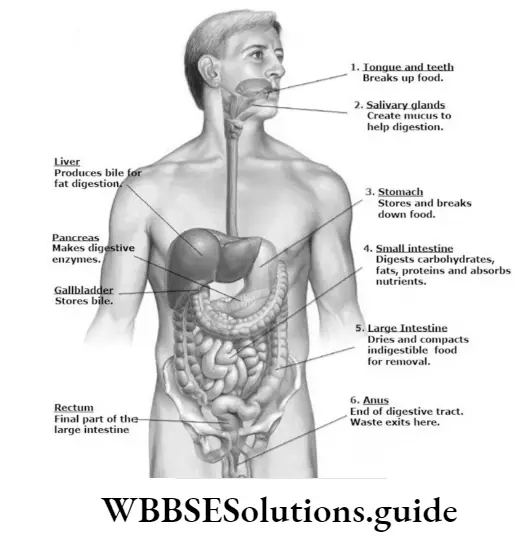
“digestion and absorption neetprep “
Mouth
The Mouth Contains The Tongue, Teeth And Salivary Glands. The process Of Digestion Starts In The Mouth Itself. Food Is Bitten Off And Chewed (Masticated) By The Teeth.
The Chewed Food Gets Mixed With The Saliva Secreted By The Salivary Glands. The Tongue Helps In Mixing The Food With Saliva And Its Swallowing Down The Digestive System.
Teeth: There are four main kinds of teeth in man – incisors, canines, premolars and molars
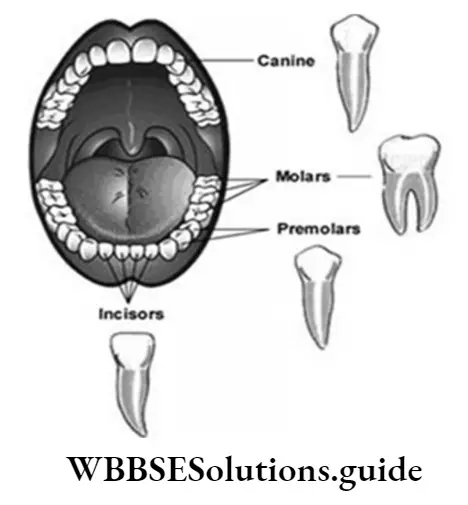
NEET Biology Class 7 Digestion Notes
The front four teeth in each jaw are the incisors. They are flat and help in biting the food. On either side of the incisors are the canines. These are sharp and two in number in each jaw. They are meant for tearing the food.
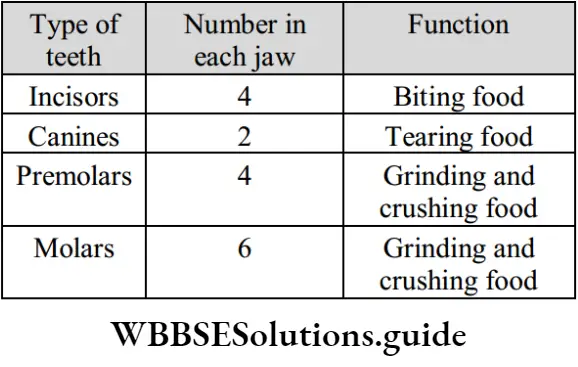
“neetprep digestion and absorption “
The premolars and molars are meant for grinding and crushing the food. Premolars are behind the canines, two in number on either side of each jaw. Molars are behind the premolars.
In an adult, there are six in number in each jaw, three each on either side of the premolars. In young people, there are 8 molars in all. The second set of 4 molars appears at the age of eighteen or even later. These are called wisdom teeth.
Each jaw in an adult has 16 teeth, or 32 teeth in all. Man has two sets of teeth milk teeth and permanent teeth. The first set of teeth in a baby are called milk teeth.
Human Digestive System NEET Notes for Class 7
These are replaced by permanent teeth when one is a child.
- At birth, a human infant has no teeth. After six months or so, the first teeth appear in the centre of the lower jaw.
- Milk teeth are twenty in number.
Tongue: Tongue is also important for eating. It helps in Bitter mixing the chewed food with saliva and swallowing the food.
Further, the tongue tastes, as it has sense organs called the taste buds. These buds distinguish four basic tastes – salty, sour, sweet and bitter. In addition, the tongue helps us to speak.
Salivary glands: There are three pairs of salivary glands in our mouth. A watery material called saliva is secreted by these glands.
- Saliva helps in the digestion of food. Saliva contains an enzyme called amylase (also called ptyalin).
- Amylase acts on starch and changes it into a sugar (called maltose). This sugar is sweet and soluble in water.
Note: The liver is the largest gland in the body.
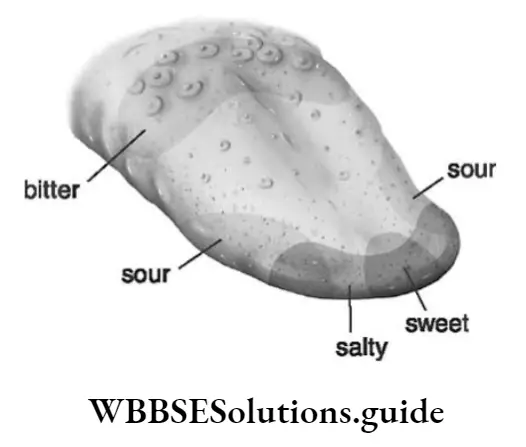
Digestion NEET Notes
Oesophagus (Gullet)
The oesophagus connects the mouth cavity with the stomach and is also called the food pipe. No digestion takes place here. It only helps in pushing the food into the stomach.
Stomach
- The stomach is a muscular bag lying in the upper abdomen. Here the food is churned and converted into a semi-solid paste.
- The stomach secretes a juice called gastric juice and an acid. Proteins present in the food are digested by the gastric juice partly. The partly digested food from here goes to the small intestine.
Digestion Class 7 NCERT Notes for NEET
Small Intestine
- The small intestine is a long coiled tube. It also secretes a juice and digestion of all types of food is carried out here.
- As a result of indigestion, food is converted into a simple form, and glucose, amino acids fatty acids, etc., are formed. These end products are ready for absorption.
- The inner surface of the small intestine has a number of finger-like projections called villi. These villi increase the area for absorption of digested food.
- Saliva contains an enzyme called amylase {also called ptyalin). Amylase acts on starch and changes it into a sugar (called maltose).
- This sugar is sweet and soluble in water. The small intestine also absorbs the digested food and passes it on to the blood system. Thus, the nutrients are carried to all parts of the body.
“physiology of digestion and absorption “
Note: The small intestine is larger in length (about 6 metres) than the large intestine (about 1.5 metres). It is the main organ for the absorption of digested food
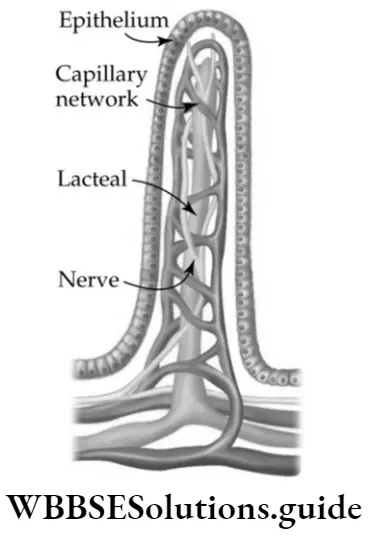
NEET Biology Digestion Important Notes
Large Intestine
The large intestine has no digestive function to carry out. It helps in absorbing water and in removing the undigested solid wastes through the anus.
Liver and Pancreas: These are special organs connected with the digestive system.
- The liver secretes juices which help in digestion and are stored in a small bag called the gall bladder.
- The pancreas secretes a substance called insulin and also a juice. Insulin is important for regulating sugar levels in the body.
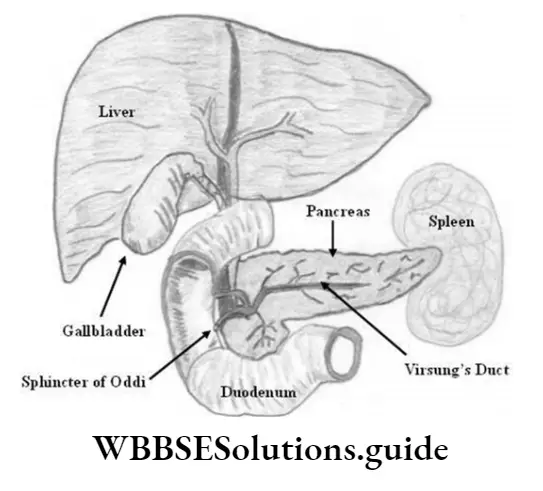
3. Digestion In Humans
We have already studied the digestive system of humans. The process of digestion is brought about with the help of digestive juices called enzymes.
An outline of the different enzymes produced in humans along with the food acted upon and the products.
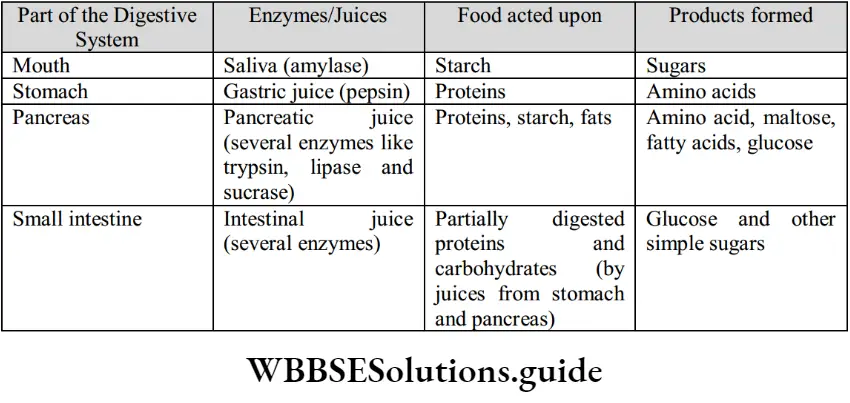
Best Short Notes for Class 7 Biology Digestion
4. Teeth In Herbivores, Carnivores And Omnivores
Dentition: The arrangement of teeth in the jaws is called dentition. Teeth in herbivores (like rabbits), carnivores (like dogs) and omnivores (like human beings) are related to the diet the animals take.
As mentioned earlier, there are four different kinds of teeth
- Incisors (for cutting)
- Canines (for tearing)
- Premolars,
- Molars (for grinding)
Dentition In Herbivores (Example Rabbit)
- They have incisors which are sharp and used for cutting. Canines are absent and a gap occurs between the incisors and premolars. This gap is called diastema. The premolars and molars are used for chewing.
- The premolars and molars are almost similar in shape and size, as they have the same function. The gap between the incisors and the premolars (diastema) allows the tongue to manipulate the food.
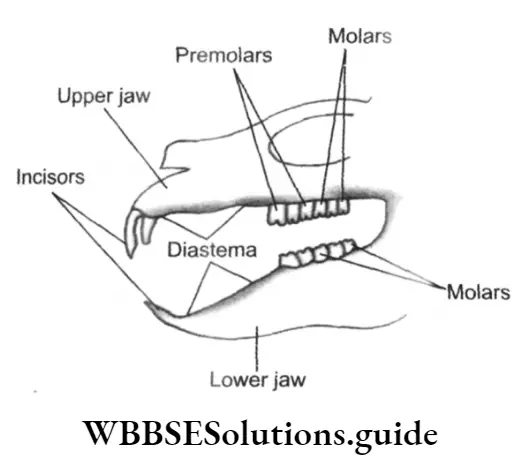
Digestion Class 7 NEET Key Concepts and Summary
Dentition In Carnivores(Example Dog)
- In carnivores, the teeth in different regions of the mouth are specialised to perform a particular function.
- They have all four kinds of teeth. The incisors in the front of the mouth grip the food and strip off small pieces of flesh.
- The canines are long, sharp and pointed and adapted for flesh-eating. The molars have a somewhat flat surface for grinding and crushing the bones.
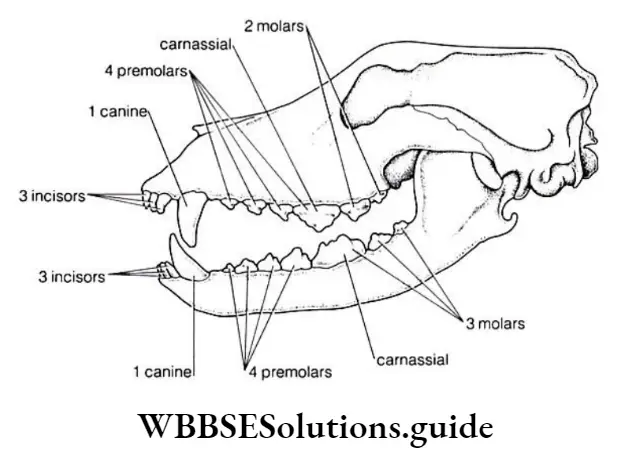
Dentition in omnivores (for example human beings)
- In omnivores, all four kinds of teeth are well-adapted to cope with a wide range of foods vegetables and a variety of meat.
- The teeth are not as specialised as in carnivores and herbivores. The four kinds of teeth in human beings have been already described.
5. Structure Of A Tooth
- You have learnt that teeth, present in the mouth cavity, play an important role in biting and chewing food.
- In an adult human being, there are four types of teeth incisors, canines, premolars and molars.
“difference between digestion and absorption “
Fixed to the gums, each tooth has the following three parts:
- Root, the part embedded in the jaw,
- The crown, the top part projecting above the gums, and
- The neck is the part between the root and the crown.
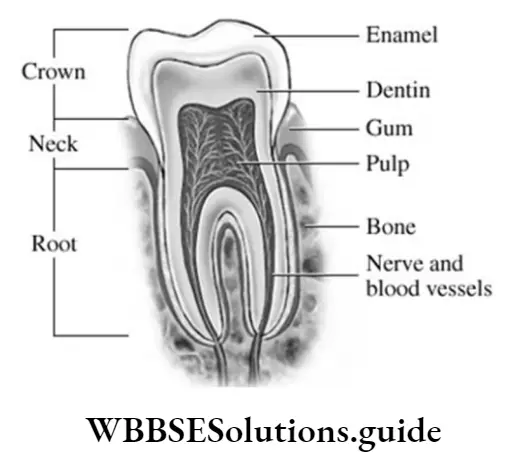
NEET Biology Class 7 Chapter 6 Detailed Notes with Explanation
Internally, there are three parts of a tooth – enamel, dentine and the pulp cavity. Enamel is the white part of the tooth and is the hardest substance in our body. Below the enamel, dentine is present.
Inner to dentine is the soft pulp cavity which contains blood vessels and nerves.
6. Care Of The Teeth
- Teeth are commonly seen to become yellow and suffer from cavity formation. When food is eaten, small amounts are left in between the teeth.
- Saliva and bacteria (present in the mouth) stick to the teeth and form a sticky film. This sticky film is called dental plaque.
- The enzymes produced by the bacteria act on the food particles, particularly sugars and acids.
- The acids dissolve away the tooth enamel causing tooth decay. Ultimately a hole or cavity is formed in the tooth.
- Plaque affects the gums too, causing gum disease. The gums swell and may bleed on brushing.
- The plaque builds up in the region where the teeth meet the gums and forms a space. Bacteria growing in this space cause the teeth to fall.
“difference between digestion and absorption “
Plaque formation and other diseases can be avoided by
- not eating foods like sweets, chocolates and ice-creams,
- and consuming foods that contain sufficient calcium, phosphorous and vitamin D such as milk,
- fish, raw vegetables, carrots, spinach (palak), radish, cabbage and fresh fruits (the teeth and gums get good exercise when fibrous foods are eaten), cleaning teeth after eating sweet, sticky food,
- brushing teeth thoroughly and regularly every day in the morning and again before going to bed, and
- using fluoride toothpaste.
“difference between digestion and absorption “
